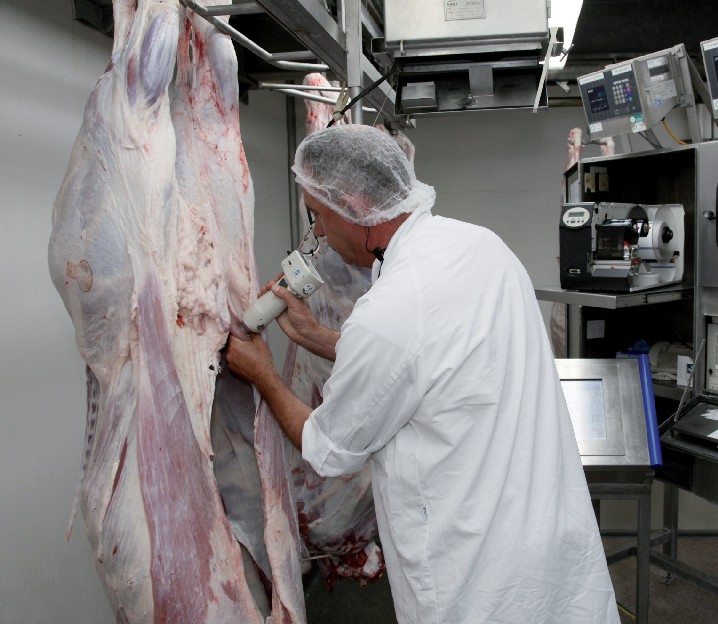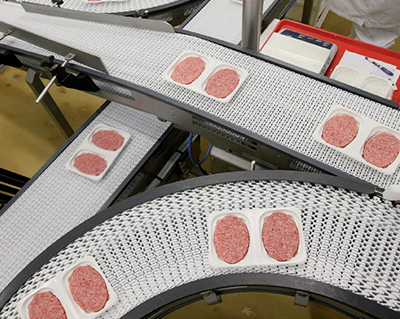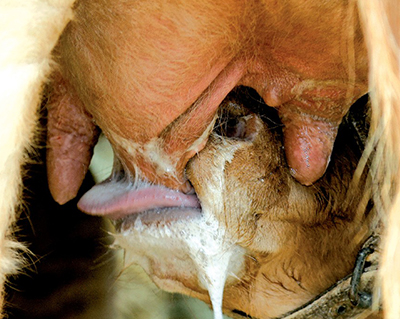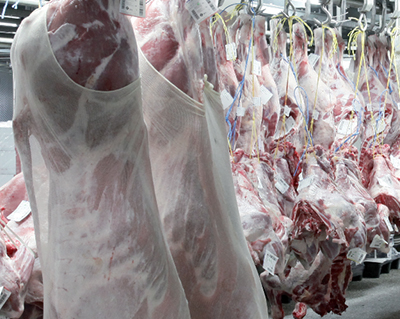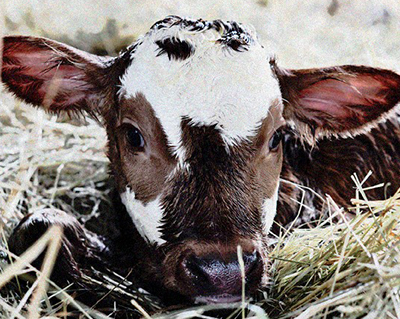What is veal and what is beef? After working on an answer for this very question for numerous years, the European Union decided on a definition for veal in 2008:
veal is the meat from young cattle aged 0 to 12 months. Within this definition, Europe also came up with two classes of veal: Class V for calves younger than eight months and Class Z for calves between 8 and 12 months. Any meat from animals older than 12 months is classified as beef.
Prior to 2008, there was a system that defined warm meat by weight just after slaughter. If a carcass weighed under 200 kilos, then the meat was classified as veal. For carcass weights over 200 kilos, the meat was classified as beef. With these new rules, weight no longer plays a role. It is only an animal’s age that counts.
Below you can read some of the different names used in Europe to distinguish between the two classes.
| Category V | Category Z | |
| Great Britain | veal | beef |
| The Netherlands | kalfsvlees | rosé kalfsvlees |
| Germany | Kalbfleisch | Jungrindfleisch |
| France | (viande de) veau | (viande de) jeune bovin |
| Italy | (carne di) vitello | (carne di) vitellone |
| Belgium | kalfsvlees, (viande de) veau | jongrundvlees, jeune bovin |
| Spain | (carne de) ternera blanca | (carne de) ternera |
| Portugal | vitela | vitao |
The slaughter, weighing and classification of meat is bound by strict regulations.
This means that a buyer will be able to judge what he is buying, even from a distance. It
also deters dishonest competition. The majority of carcasses are sold according to the
carcass weight after slaughter. This is defined and strictly monitored by independent
inspectors according to the EUROP system.
Everything is prescribed, from what can or cannot be removed from the carcass before
weighing, to the maximum amount of time an animal is allowed to wait after its arrival
and before being slaughtered and weighed. This is a maximum of 4 hours. And within
those 4 hours, the animal needs to be weighed within 45 minutes of being slaughtered.
Each animal is labelled with information including the identification or slaughter
number of the animal, the weight of the carcass, the date of slaughter, where it was
raised, the name of the slaughterhouse and a full I&R number (Identification and
Registration) for each calf.
Immediately after slaughter, the calf is assessed for the conformation class, fat cover,
colour and age. The inspector also looks for roundness of muscles and the volume of the
carcass. Most attention is given to the hindquarters, back, shoulders, the loins and the
legs. The meat is graded according to the following letters:
E = excellent The muscle development is outstanding and all profiles are round to very round.
U = very good The muscle development is strong and the profiles are round in general.
R = good The muscle development is good and the profiles are straight in general.
O = fair The muscle development is moderate and the profiles are straight to hollow.
P = poor The muscle development is minimal and all profiles are hollow to very hollow.
Officially there is also a category S (superior), which is meant from the rump or round.
Usually that’s not an issue for calves. Categories can also be given a minus sign or a plus
sign to help classify the meat.
In order to determine the fat class, a visual appraisal is carried out of external fat
deposits and those on the inside of the chest cavity. These are graded from 1 to 5. 1 being
lean and 5 being fat: i.e. a carcass that is covered with fat and has a significant amount of
fat in its chest cavity.
The colour of meat in the flank is measured using an electronic colour measuring
instrument. The meat from milk-fed calves is divided into classes 1 to 10, from light to
dark. Rose veal has a value ranging from 11 to 13. In this way, someone buying veal in,
say, Italy or France knows exactly what to expect.
